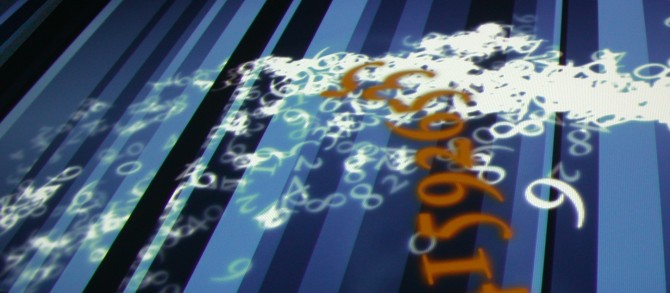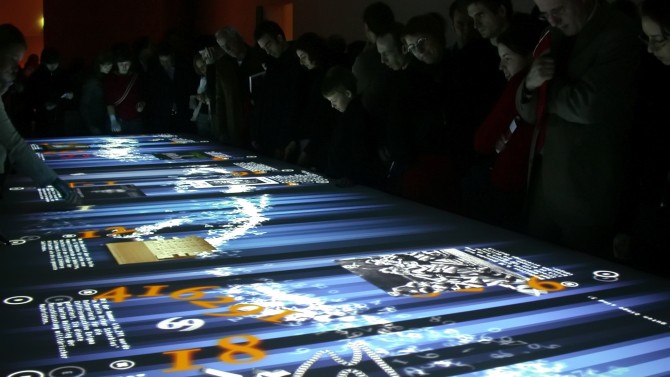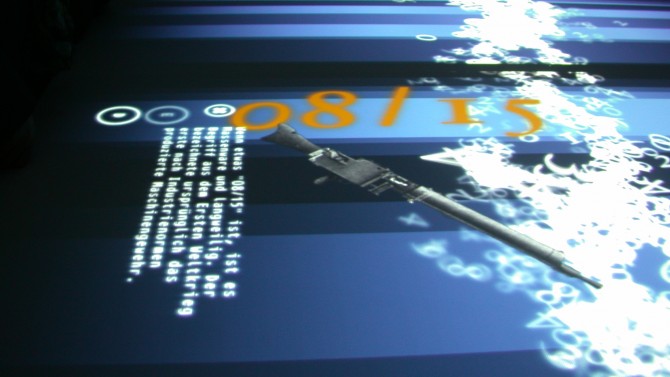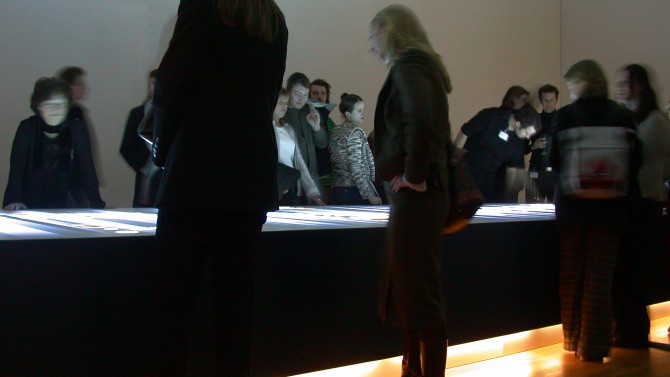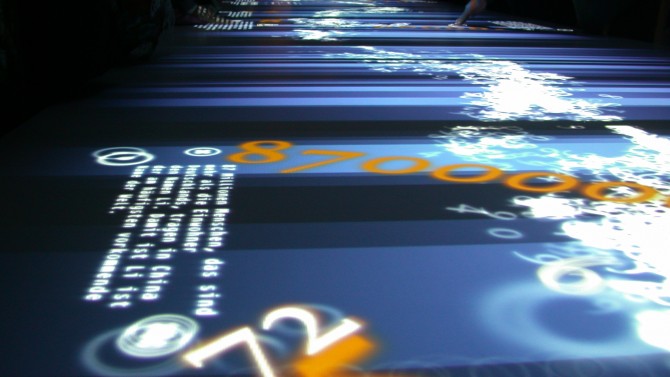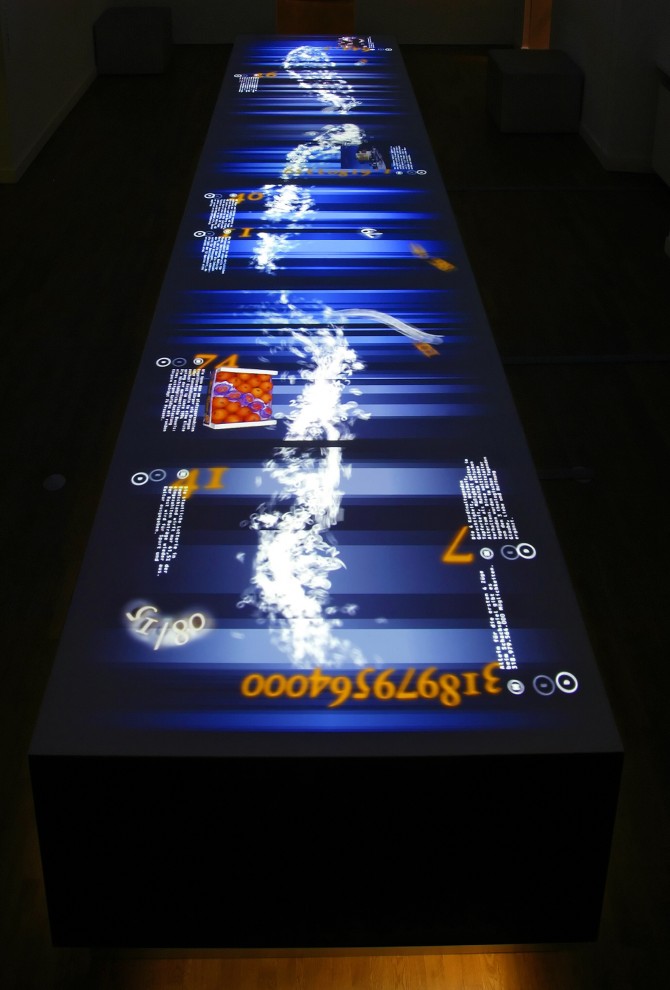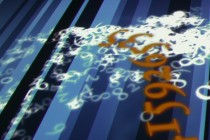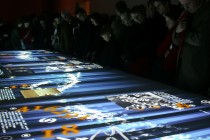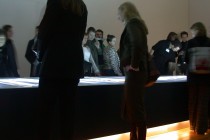floating.numbers, 2004
Jewish Museum Berlin, Germany
Numbers are commonly seen as quantitative measures of entities. Depending on the context however, they often also have religious, historical, mathematical and philosophical meanings. floating.numbers attempts to bring back this often forgotten or unknown layer of meaning into their interpretation in the age of digital determinism.
floating.numbers is a 9 x 2 metre interactive table on which a continuous stream of numbers is floating. Individual digits appear randomly at the surface and, once touched by a visitor, reveal their meaning in text, pictures, animation and small interactive applications. The significance of the numbers materialises from the various perspectives of sociology, religion, history, mathematics, art or one’s outlook on everyday life.
For this installation, the table was consciously employed as an interface. This everyday object is perceived as a place of communication, conversation and exchange of ideas. The visitors are engaged into a dialog with the application as well as with other visitors about the numbers they explore. On the underside of the wooden tabletop a grid of in-house developed capacitive sensors are installed detecting the position of the visitors’ hands.
The content was computationally designed and is generated in real time, communicating to the audience an autonomous behavioural system. All numbers floating on the table are so-called typobots (type-robots) with specific behaviour (move along different currents; move forward, swishing like a fish depending on their length; move in the direction of attractors; etc.). The goal was to offer an autonomous system giving users the impression they are engaged with an independently acting and non-deterministic system, contrary to the usual tree- or rhizome based applications.
floating.numbers was the first of many multi-touch table-installations, all based on the same technology.
